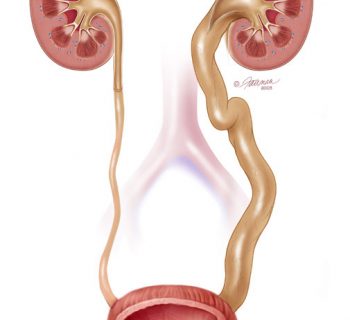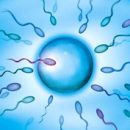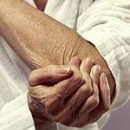Features of the structure of the body and urinary organs related to the disease often make some adjustments during and symptoms of urolithiasis. The elderly men, in particular, more often than in women, there are stones of bladder and urethra. One of the factors due to such addiction is a fairly common disease - prostate adenoma.
Content
Urolithiasis in men has its own characteristics, more often than women have such pathology as bladder stones and urethra. One of the reasons for such a dependence is the male disease of the prostate adenoma, the anatomical narrow and the large length of the urethral canal.
Male health and urolithiasis in the elderly
 Prostate adenoma or prostate hyperplasia — Benign tumor, often occurring in older men and accompanied by the growth of prostate tissues. The tumor would not give any anxiety if a urethra did not pass through the patient. This neighborhood necessitates the appearance of symptoms of urination disorders, it becomes the cause of stagnation of urine in the urinary bubble, leads to the development of urolithiasis in men, central, pyelonephritis and other complications.
Prostate adenoma or prostate hyperplasia — Benign tumor, often occurring in older men and accompanied by the growth of prostate tissues. The tumor would not give any anxiety if a urethra did not pass through the patient. This neighborhood necessitates the appearance of symptoms of urination disorders, it becomes the cause of stagnation of urine in the urinary bubble, leads to the development of urolithiasis in men, central, pyelonephritis and other complications.
Problems with urination long before the development of a man's symptoms of urolithic disease make adjustments to his life and cause a patient to the doctor.
- Urination becomes longer.
- Urine flows thin and sluggish jet, at the end of the emptying of the bladder — by drop.
- For complete emptying, the patient needs to be located.
- Walk to the toilet come often, watering is highlighted in small portions.
The urination process becomes painful for a man, urolithiasis and cystitis further exacerbate the situation: early erection and disease ejaculation.
The progression of the prostate adenoma makes a man who repeatedly wake up at night to go to the toilet, urinate urges become frequent, sometimes observed urine.
Acute and chronic urination delay, urolithiasis, pyelonephritis, hydronephrosis — Terrible complications to which prostate adenoma can lead without appropriate treatment. Urolithiasis in men, the elderly and pretty young becomes the result of the combined action of external and internal factors contributing to the stone formation.
Symptoms of urolithiasis in men: bladder stones

Stones of the bladder often accompany prostate adenomes. In some cases, they are formed directly in the bubble, in others they drop out of the kidneys and continue to increase. This form of urolithiasis is found in men who are treated for treatment for diseases of the prostate gland and essentials of urethra caused by developmental anomalies or inflammatory changes. Chronic stagnation and an increase in urine concentration lead to salts crystallization, the inflammatory process speeds up the processes of stone formation and the development of symptoms of urolithiasis in men.
The stones of the bladder preferably are urals, single or multiple, small or large, filling the entire bladder. Small stones can spontaneously depart, causing irriters of urethra, large concrections constantly maintain cystitis phenomena. Urolithiasis may be asymptomatic, not reflected on the prostate adenoma clinic. Classical complaints caused by the development of urolithiasis and cystitis are pain at the bottom of the abdomen over Lone, the presence of blood in the urine at the end of urination. Large stones provoke pain when changing body position, can shift and overlap urine outflow.
Stones of urethra in men
 Stones Urethra — This is another feature of the current Urolithiasis in men. The concrections, and in the bladder, and in the urethra interfere with the closure of the sphincter and become the cause of urinary incontinence under the urolithiasis in a man, treatment, including the removal of stone, in this case solves the problem. The backs of the back of the urethra manifest themselves pain in the seat and walking, uroliths that go into the hanging part of the urethra are tested under the skin of the penis and when the urination causes sharp pain when urine.
Stones Urethra — This is another feature of the current Urolithiasis in men. The concrections, and in the bladder, and in the urethra interfere with the closure of the sphincter and become the cause of urinary incontinence under the urolithiasis in a man, treatment, including the removal of stone, in this case solves the problem. The backs of the back of the urethra manifest themselves pain in the seat and walking, uroliths that go into the hanging part of the urethra are tested under the skin of the penis and when the urination causes sharp pain when urine.
In general, in the elderly, urolithiasis in the presence of stones in the kidney proceeds without classical renal colic, but leads to renal failure, gagging the patient's condition in the presence of tandem «adenoma and urolithiasis in men». Treatment necessarily includes an operation on the prostate hyperplasia, a concomitant or subsequent removal of stones.









